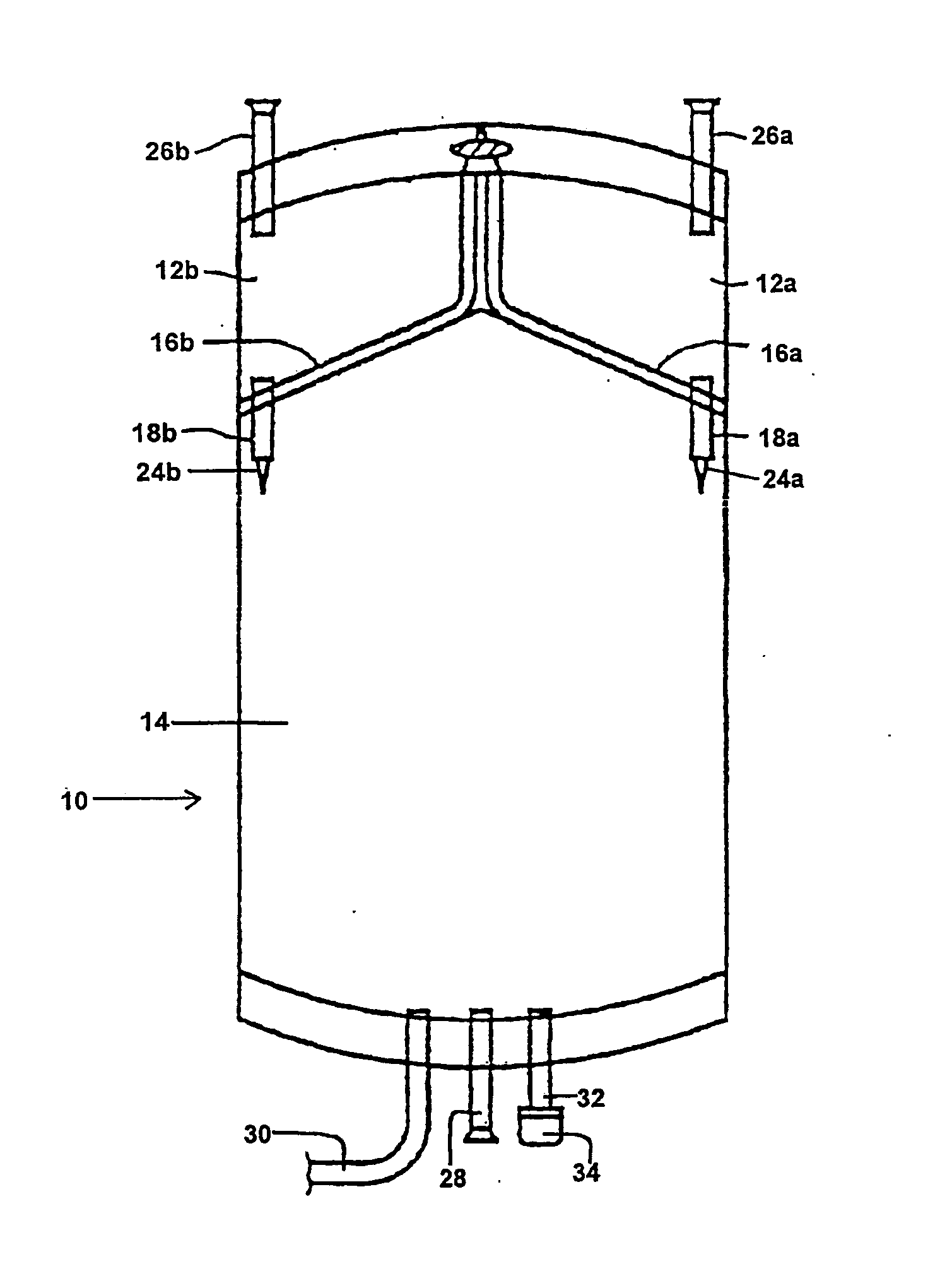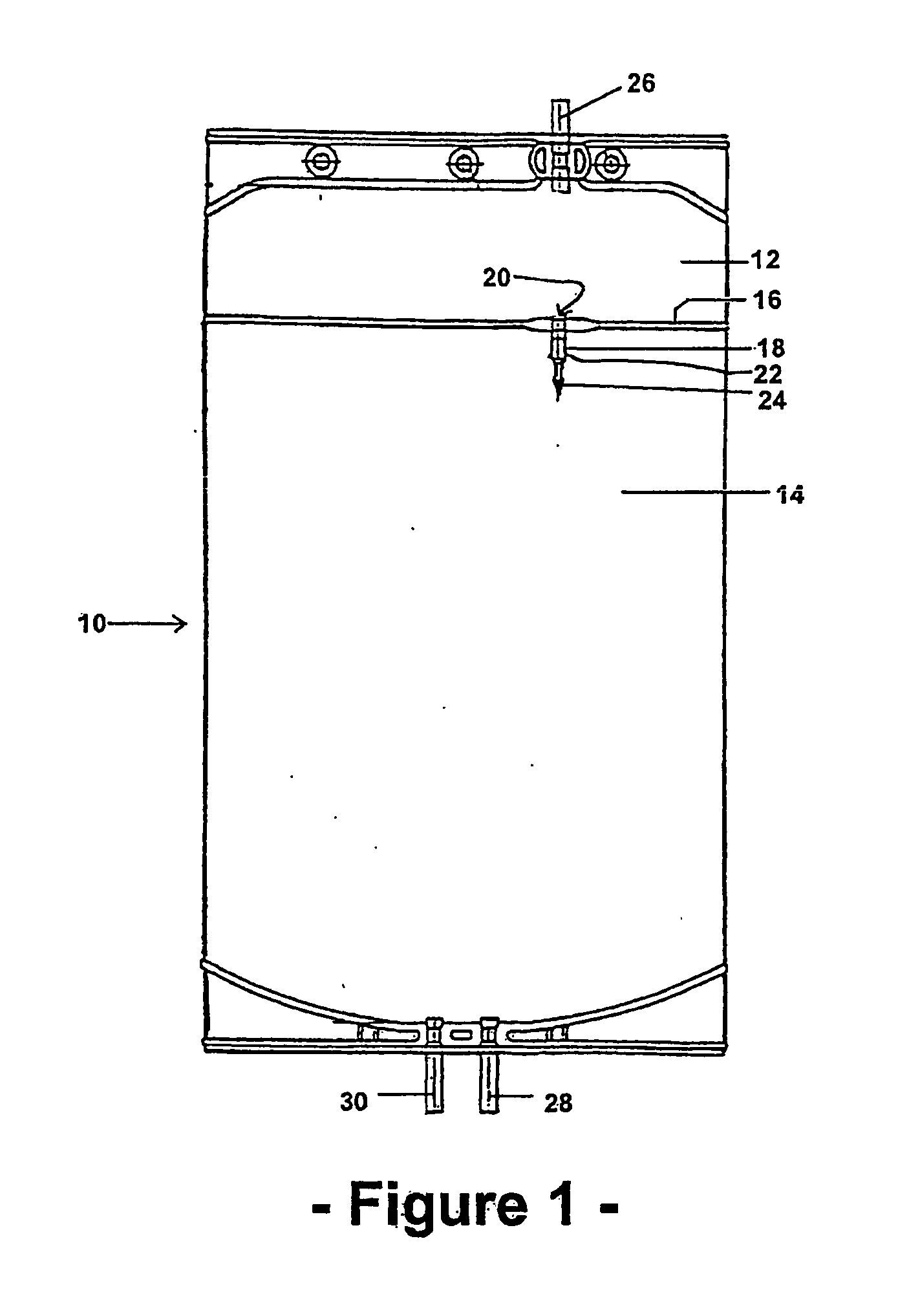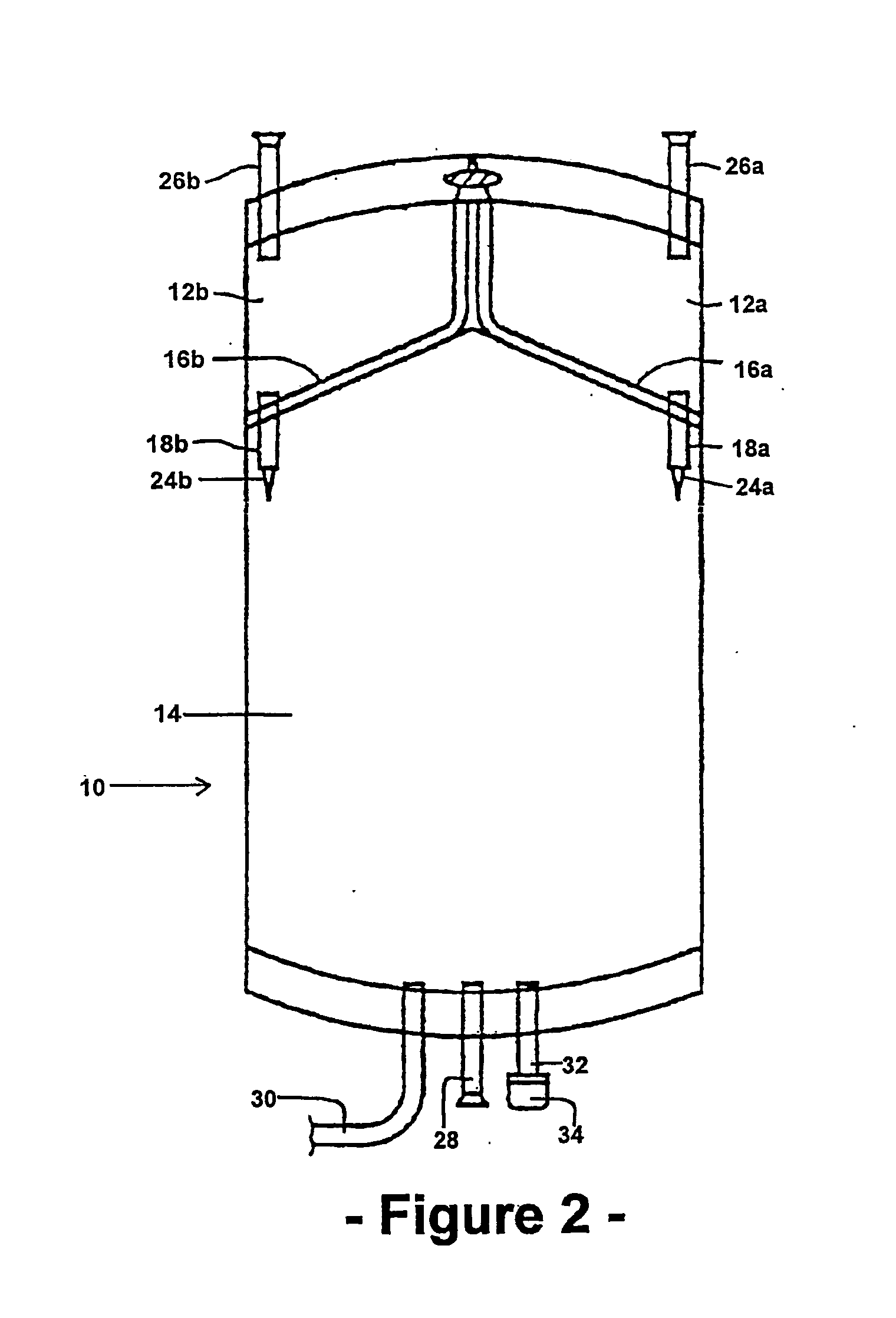Multiple compartment bag assembly for dialysis fluid
a technology of dialysis fluid and bag assembly, which is applied in the direction of packaging foodstuffs, pharmaceutical containers, packaged goods types, etc., can solve the problems of increased ph, increased ph, and the tendency of bicarbonate-containing solutions contained in flexible plastic material bags to lose cosub>2
- Summary
- Abstract
- Description
- Claims
- Application Information
AI Technical Summary
Benefits of technology
Problems solved by technology
Method used
Image
Examples
example 1
Dilute Form HD
[0019]
Calcium chloride.2H2O0.271 g (1.84 mmol / l)Sodium chloride6.450 g (110 mmol / l)Lactic acid0.284 g (3.16 mmol / l)Magnesium chloride.6H2O0.108 g (0.53 mmol / l)Dissolved CO25-30 mmol / lpH3.1pCO2150-750 mmHgWater to volume1000 ml
example 2
Concentrated Form HD, Including Glucose
[0020]
Calcium chloride.2H2O5.145 g (34.8 mmol / l)Magnesium chloride.6H2O2.033 g (10 mmol / l)Glucose anhydrous22.00 g (22 mmol / l)Lactic acid 5.40 g (60 mmol / l)Dissolved CO25-30 mmol / lpH2.3pCO2150-750 mmHgWater to volume1000 ml
[0021] Preferably, as already mentioned above, the amount of dissolved CO2 in the above solutions is within the range of 5 to 15 mmol / l leading to a pCO2 value within the range of 110 to 350 mmHg.
[0022] A more specific Example of a formulation of an acid component solutions of the invention suitable for the preparation of PD fluids is set forth below:
example 3
PD Form
[0023]
Sodium chloride5.30 g (91 mmol / l)Calcium chloride.2H204.77 g (32.2 mmol / l)Magnesium chloride.6H201.62 g (8.0 mmol / l)Glucose anhydrous 500 g (2780 mmol / l)Acid (HCl)0.2-0.4 mmol / lDissolved CO25-30 mmol / lpH3.2pCO2110-675 mmHgWater to volume1000 ml
[0024] As mentioned, the partial pressure of CO2 exhibited by the aqueous acid component solution most preferably substantially matches that of the aqueous bicarbonate component solution. The invention accordingly also provides a process for preparing an aqueous acid component solution, which may be of the particular formulations described above, which comprises the steps of determining the carbon dioxide partial pressure value exhibited by an aqueous bicarbonate component solution, preparing the aqueous acid component solution, and introducing carbon dioxide into the prepared aqueous acid component solution to obtain an aqueous acid component solution which exhibits a carbon dioxide partial pressure value which substantially mat...
PUM
| Property | Measurement | Unit |
|---|---|---|
| Fraction | aaaaa | aaaaa |
| Molar density | aaaaa | aaaaa |
| Molar density | aaaaa | aaaaa |
Abstract
Description
Claims
Application Information
 Login to View More
Login to View More - R&D
- Intellectual Property
- Life Sciences
- Materials
- Tech Scout
- Unparalleled Data Quality
- Higher Quality Content
- 60% Fewer Hallucinations
Browse by: Latest US Patents, China's latest patents, Technical Efficacy Thesaurus, Application Domain, Technology Topic, Popular Technical Reports.
© 2025 PatSnap. All rights reserved.Legal|Privacy policy|Modern Slavery Act Transparency Statement|Sitemap|About US| Contact US: help@patsnap.com



